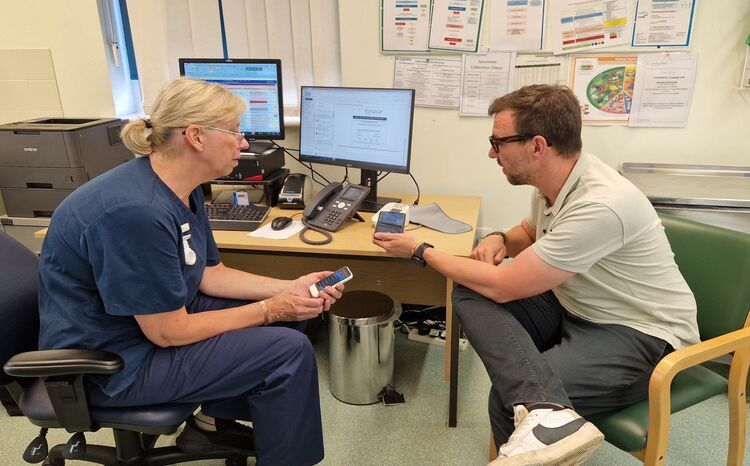Healthcare Interoperability: read all about it
- 5 November 2008

A flurry of stories about the future of the National Programme for IT in the NHS added spice to E-Health Insider’s Healthcare Interoperability event in Birmingham, where 400 delegates also discussed standards and the practicality of making projects work on the ground. Lyn Whitfield reports.
Healthcare Interoperability took place at an interesting time for health service IT. The days leading up to the event saw a flurry of press stories suggesting that the National Programme for IT in the NHS might be “grinding to a halt.”
Shadow health spokesman and keynote speaker Stephen O’Brien noted that the stories had no obvious “hook” and simply rounded up earlier items about key suppliers not being replaced and “strategic” care records systems not being deployed.
“I think the time was right to challenge the perceptible lack of progress with the programme,” he said. “Reporters also made the point that the Treasury is eyeing up the programme. So this is a critical time.”
Before the conference and exhibition in Birmingham, suppliers had argued that the days of “big bang” deployments of the kind envisaged by the programme are over. The future, they argued, belongs to “best of breed” systems; or to trusts choosing systems that meet specific business requirements, based on standards that allow them to interoperate.
On the day, though, it soon became clear that things are not quite so clear cut. For a start, NHS Connecting for Health, the agency that runs the national programme, does not accept that it is grinding to a halt. It says plenty is going on in the background, and there will be renewed momentum by Christmas.
Meanwhile, O’Brien questioned how easy it would be to unpick the programme, even as he attacked it. And speakers highlighted the considerable technical and practical issues that still need to be resolved before systems – and the workflows they support – are truly interoperable.
Darzi matters
Brian Derry, CfH’s Health Informatics Review programme director, told the conference that IT was high on the health service’s agenda following Lord Darzi’s Next Stage Review of the NHS, which called for better information at all levels to drive choice and quality.
However, he outlined how far there is to go before the Review’s aspirations become reality. At the moment, Derry said, GP practices are “islands” of paperless working on which “lots of non-paperless stuff washes up” – particularly from hospitals where “the [sticky] note remains one of the most popular forms of record keeping.”
He picked out some recent steps that have been taken to improve things: such as the publication of record keeping standards for hospital admission, handover and discharge by CfH and the Royal College of Physicians and a new push on using the NHS Number by the National Patient Safety Agency.
The first, Derry said, was essential for structuring the information that would go into electronic records and the second was essential for pulling together information held in different systems. “Our vision is for patient-centred information,” he concluded. “Not just a large, single record, but pulling different elements together [so information is not] driven by where the patient is or who is treating them.”
Nobody in the audience disagreed with the vision. What questioners wanted to know was when detail would be put on the bones of this summer’s Health Informatics Review; and how perceived barriers to information sharing caused by the national programme’s multi-million pound contracts could be overcome.
Derry was unwilling to be drawn on contract issues – although he argued that since some hospitals were finding ways to share information with primary care, they could not be insuperable.
O’Brien also homed in on the contracts. In his speech, he launched a stinging attack on the national programme, arguing that it had been “misconceived” from the outset as a way of forcing change on the health service instead of supporting those who worked on it.
He hinted strongly that he believed the independent review that the Conservatives have commissioned from a team led by Dr Glyn Hayes will conclude that the future lies in local and off the shelf systems, built on standards to ensure consistency and interoperability.
“There will have to be some form of standards setting role, perhaps in Leeds,” he said. “But it opens the door to off the shelf and open source solutions. There is no reason why individual consultants in hospitals should not choose their own software.”
However, he emphasised that the review is a review and not an audit; in other words, that it is looking at the state of NHS IT, rather than trying to stop the national programme before deciding what to do next. The difficulty, he argued, is that the programme’s contracts are so opaque it is hard to know what to keep from it.
A questioner from Liverpool Primary Care Trust appealed for good work that was underway to be saved from “political sniping.” The PCT was showing its ‘new health service for Liverpool work, which is based on information sharing using EMIS Web, in the Best Practice Showcase.
But the shadow health minister said he would not apologise for trying to hold the government to account for the national programme. “We need information to move forward," he said. "So we say to the government ‘give us the information, and if we are wrong, and there is a better way forward, then let’s take it’."
Standards to the fore
Other speakers outlined some of the work that is going on to make standardisation a possibility. Chris Bull from Integrating the Healthcare Enterprise (IHE) talked about how it had been created to bring together work around two well-established standards, Dicom for imaging and HL7 for messaging.
He also talked about new standards – XDS and XDSI – that allow images and other healthcare information to be held in web-format, so that people can find and view them using browsers. “Things are becoming more political than technical, because you are enabling a move from big institutions [holding and locating] information to something more like Google search,” he said.
Bull outlined a number of projects outside the national programme that are using such standards to create image and data repositories that can be viewed by people with appropriate access rights from a number of locations spread over a wide geographical area.
But standards can take a long time to take hold. As Derry had done earlier in the day, Mike Bainbridge, clinical architect of NHS Connecting for Health, stressed the importance of the NHS Number and record keeping standards – while recognising that both have been discussed for a long time.
Indeed, he had a slide from a Ministry of Health pamphlet published in 1943 that called for “consistent” headings for records. Bainbridge argued that the key to getting these and other standards used now was building them into “proper interfaces” for clinicians, such as those being developed by the NHS Common User Interface Programme led by Microsoft.
However, Patricia Greenhalgh from University College London told the conference that its review of the early adopters of the NHS Summary Care Record had shown there is a “gap” between the “idea” of such projects and their “reality” – since staff will always adopt and work around them in unpredictable ways.
Progress and uncertainty
Visitors to Birmingham were also able to hear about projects that are making interoperability a reality now. In addition to the work going on in Liverpool, the Best Practice Showcase heard from trusts that are building on their existing systems to develop sophisticated bed management, order communications, blood and medicines management and other business and safety systems.
An obvious difficulty for NHS organisations is how far and how fast to push ahead with interoperability projects, given that the Health Informatics Review affirmed that the “vision” is still to deploy the “strategic” systems that are now three to four years late. Other systems are officially “interim” solutions in the meantime.
There may be some clarity next month, when Derry said the detailed implementation plan promised in the Health Informatics Review will be published. Meanwhile, in a letter to the Financial Times in response to those press stories, the new chief information officer for health, Christine Connelly, at least recognised the issue.
“It is important to provide greater clarity on how we will balance the need for local configuration of systems to reflect the working practices of different hospitals while maintaining the capability to share patient information appropriately between clinicians across the whole system,” she wrote.
“I see it as a priority to bring clarity to these issues at the earliest opportunity. I will be working with colleagues across the NHS to bring forward plans by the end of the year.




